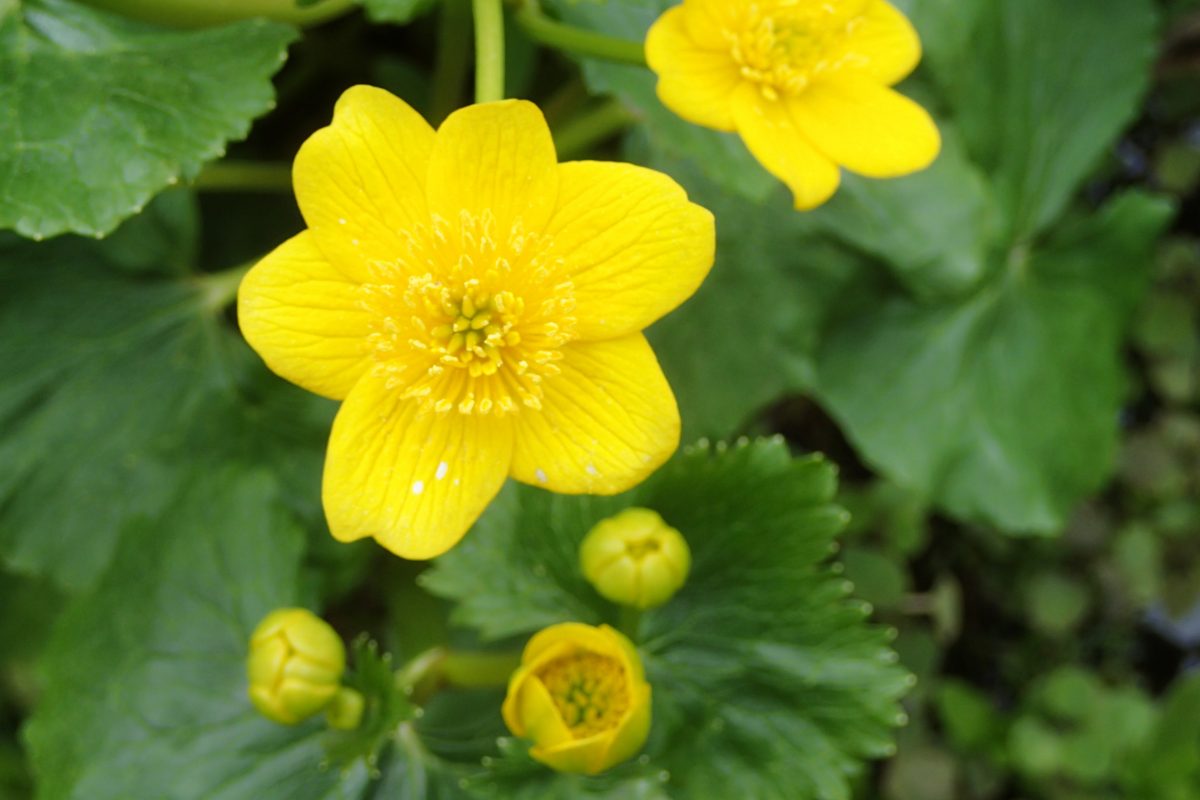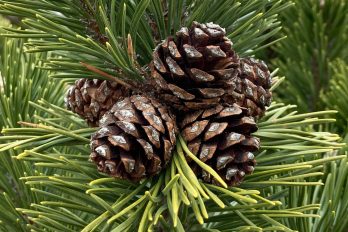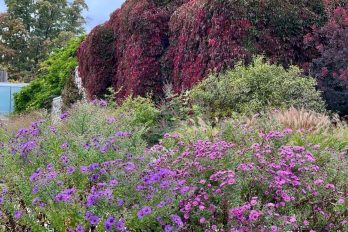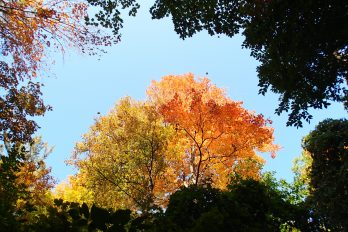Marsh marigolds (Caltha palustris) are a cheerful sign of spring in Wilket Creek ravine. They are native to southern Ontario and are part of the buttercup family, evident by their vibrant yellow flowers. As you may have guessed by their name, they grow in wet areas like marshes, ditches, wet woods and swamps – and can be planted in gardens with suitable moist conditions. Currently in bloom in the ravine just south of Toronto Botanical Garden, their showy flowers offer pollen and nectar to insect visitors, and are most commonly pollinated by hoverflies (Syrphidae).
Note: Be careful not to confuse native marsh marigold with invasive non-native lesser celandine (Ficaria verna), which is a much smaller plant invading the ravine. The last image shows how native marsh marigold can be distinguished from invasive lesser celandine. Both can be seen in Wilket Creek.
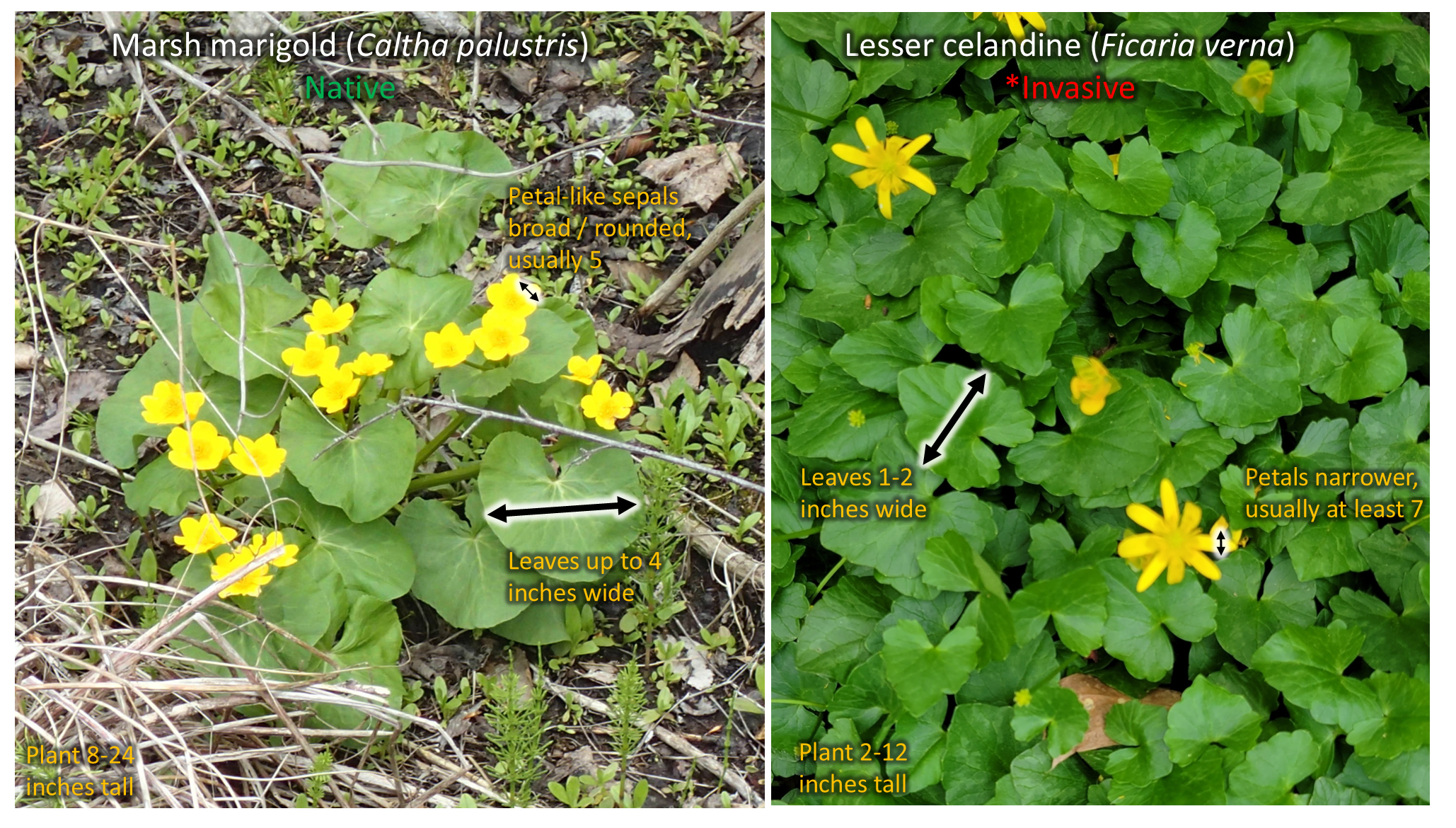
Invasive lesser celandine reaches 2-12 inches tall, compared to 8-24 inches tall for marsh marigold. Leaves of lesser celandine are 1-2 inches wide, while native marsh marigold leaves are up to 4 inches wide. The petals of lesser celandine are also narrower in shape than native marsh marigold which has broad rounded petal-like sepals.

